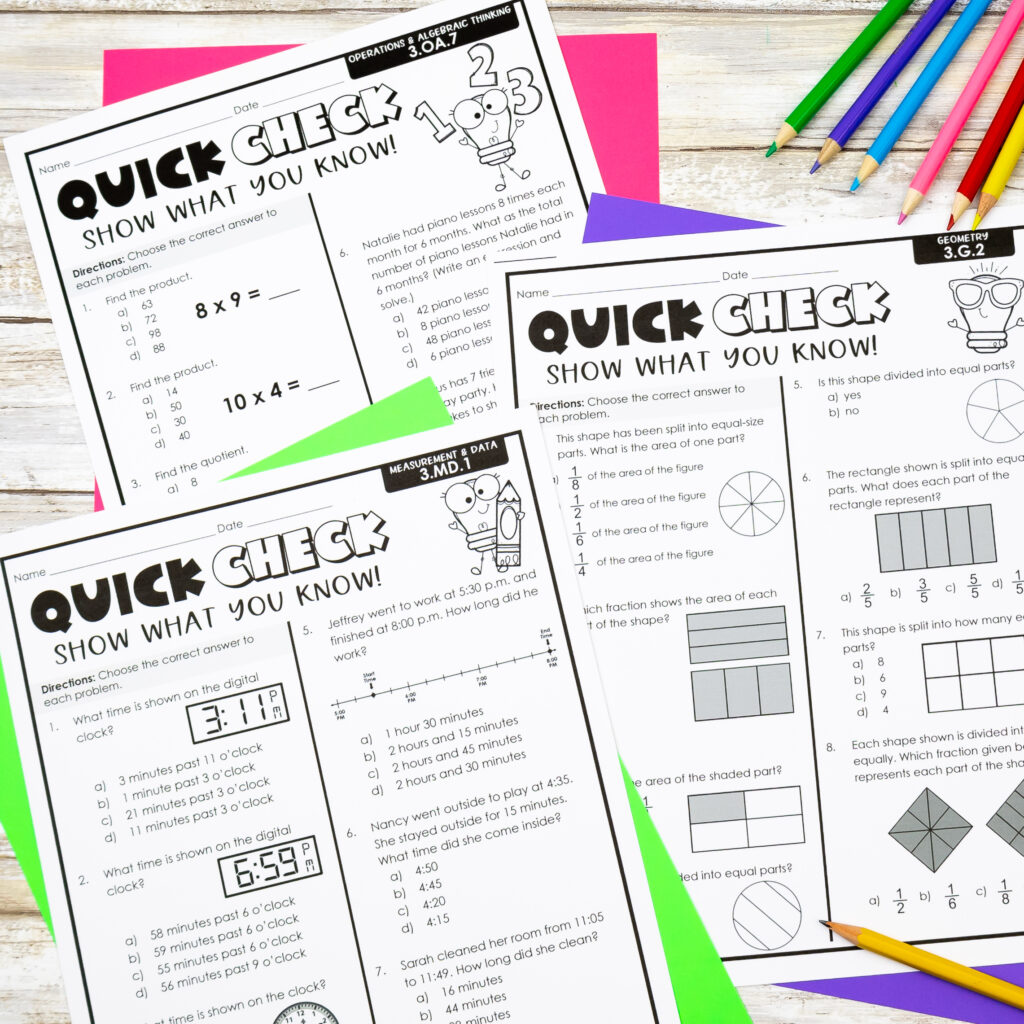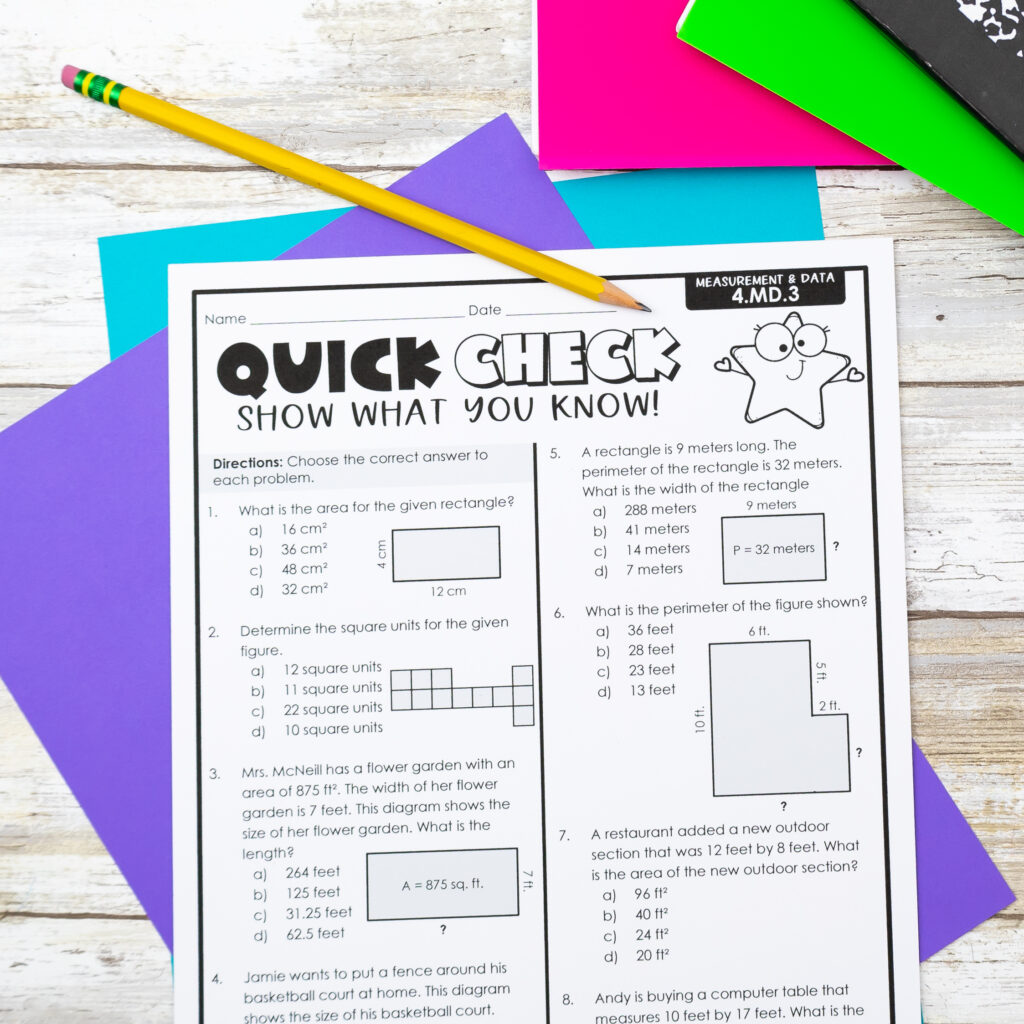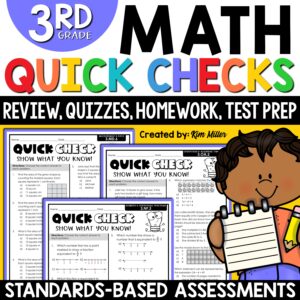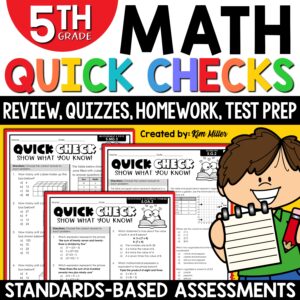Using Math Assessments to Guide Instruction
Mastering math skills are necessary to lay the foundation for future learning and prepare students for end-of-year testing. Quick math assessments to guide instruction are one way to assess your students’ math skills. To ensure each student receives personalized instruction to succeed on their tests, teachers need an efficient way of quickly assessing each student’s knowledge level. That’s where Math Quick Checks come into play—they allow teachers to evaluate individual performance so they can adjust teaching methods accordingly while at the same time helping students reach mastery by testing day!

Why is assessing math necessary?
Students learn so many math skills throughout the year. Since testing all math skills simultaneously can overwhelm students, teachers prefer to break them down into simple and fast math assessments. With frequent assessments to check student progress, teachers can quickly identify gaps in their knowledge to provide targeted instruction before moving on to new topics. Thankfully, these Math Quick Checks for grades 3-5 support this process!



As a teacher, you now have the power to uncover which math skills your students need help with quickly! With these math quick assessments, you can soon identify difficulty areas and group students accordingly. This gives you must-have insight into what needs re-teaching or extra review – giving everyone a better chance of success in meeting learning goals.
Using Math Assessments in Grades 3-5
For end-of-year testing, students will need to be able to solve math problems based on their grade level. Each quick check includes a quick math assessment for each standard and comes with data tracking sheets that make it easy to group students for re-teaching of a particular standard or skill. Honestly, students will love diving into these engaging math problems so much that they will forget they are taking an assessment!
Specifically, there are 20-25 ready-to-go math quicks per grade level. Each assignment comes with 8-10 math problems to assess each standard. The best part is you can use these math assessments any time of the year for math test prep, review worksheets, quizzes, assessments, homework, or morning work.
Since each grade level targets different reading skills, there are separate math quick checks for grades 3-5!
Tracking Your Data with Math Assessments
Our primary goal as educators is to help our students flourish and become successful mathematicians. With so much going on in the classroom day-to-day, it can be easy to overlook data tracking that could provide insight into student progress and achievement – but luckily end of year assessments come with four pages explicitly crafted for this purpose!

1. Math Standards
The Math Standards Page lists all assessed math standards and explanations on one easy-to-read sheet. You can use this sheet to see exactly which skills are evaluated on each Math Quick Check.
2. Data Recording Sheet
Using the data recording sheet allows you to keep track of all students and their levels in one place! The Data Recording Sheet aligns with a scoring rubric that follows the CCSS 5 Achievement Levels. You can use the rubric to score or grade student assessments as usual. The rubric is even included right on the sheet! The recording sheet consists of a column for each student’s name and columns for all standards to record grades and levels attained by students.
3. Data Grouping Sheet
Once we know which standards students struggle with, we can use that data to form groups. The Data Grouping Sheet will help you do just this! It is broken down by standard, making it easy to form high, middle, and low groups. All you have to do is write in each student’s name. This helps to group and target students needing re-teaching of a particular standard or skill. Then, you can use the data grouping sheet to guide differentiated instruction.
4. Student Recording Sheet
Teachers are always looking for ways for students to be responsible for their learning. The Student Recording Sheet works like magic! It includes “I Can” statements for students to check off or highlight depending on their scores. This helps students visually see the standards and skills they have mastered or need more help with. Honestly, students will be so motivated to master a skill knowing they will get to add a check mark to their recording sheet!
Simply slide the quick checks and data sheets into a binder with these dividers. Print out the provided binder cover and section dividers, and you can always keep your assessments and data handy. Thankfully, this simple data tracking system will give you the confidence you need to make data-driven decisions for your classroom.
Implementation of Math Assessments

End-of-the-year testing will be here before we know it! Now is the perfect time to implement math assessments. Ultimately, you know your students best and can choose a way that benefits your class the most. However, since it is already April, the most efficient way would be to use these as quick math assessments to for 3rd, 4th, and 5th grade to capture data quickly and offer differentiated instruction before the end of the year.
Get a head start on next year and make math assessments part of your classroom routine. Your students will love watching their confidence grow as they become stronger mathematicians – plus, it’ll prepare them for the end-of-year tests. This resource makes assessments easy to plan and helps ensure instruction hits its goals! Thankfully, this print-and-go resource with pre-made assessments will have your students engaged and feeling confident all year long.
Pin for later!




